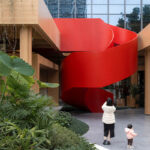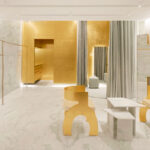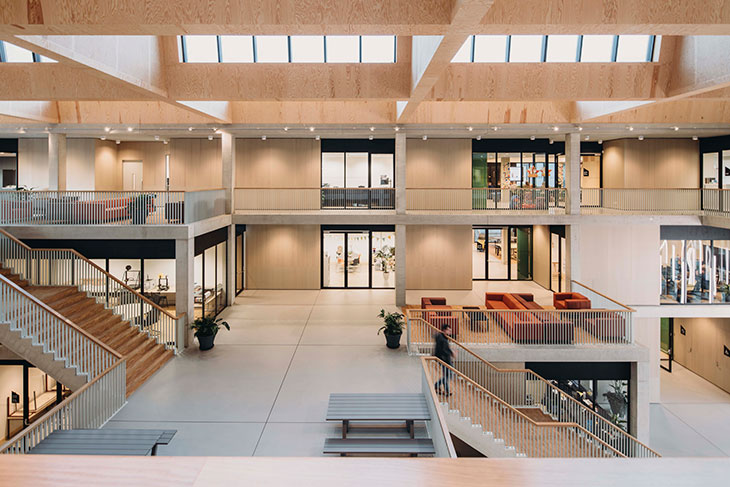
The introduction of Het Element‘s new school building, a project by De Zwarte Hond, marks a significant milestone in educational architecture, blending innovation, sustainability, and community integration. Combining the premises of two pre-vocational secondary schools, three sports halls, a dojo, and a language center, the project aimed not just for functionality but also for a cohesive, vibrant space. Architect Bart van Kampen, a key figure in the project and partner at De Zwarte Hond, underscores the importance of bridging the school’s presence with the surrounding neighborhood. The previously barren landscape has been transformed with lush greenery, turning it into a focal point for community engagement and increasing resilience against climate challenges.
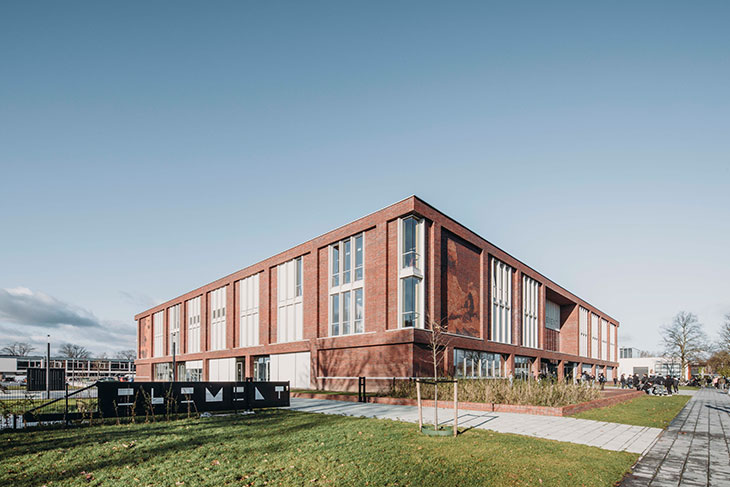
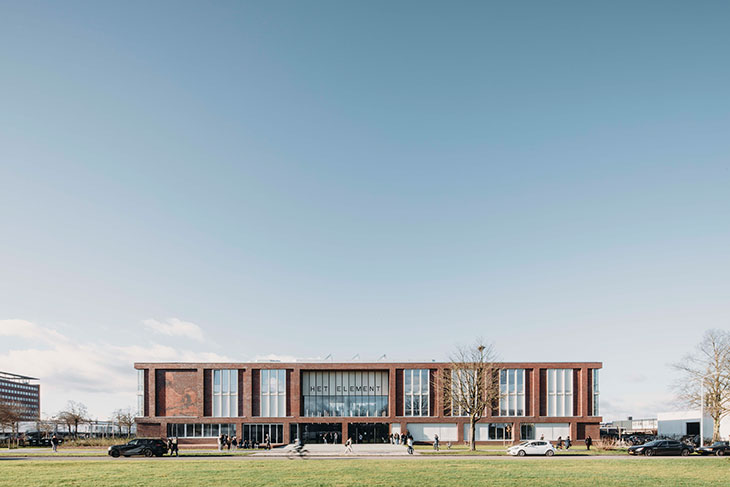
At its core, the design emphasizes human-scale dimensions and a sense of warmth, despite its considerable size. The central heart of the building, envisioned by De Zwarte Hond’s team, serves as a bustling hub, radiating vitality and fostering a sense of belonging. Here, natural light floods through the roof, creating an inviting atmosphere reminiscent of a courtyard, with various clubhouses encircling it. Each clubhouse boasts a distinct identity, characterized by unique color schemes and interior designs, fostering a sense of ownership and pride among students and staff alike.
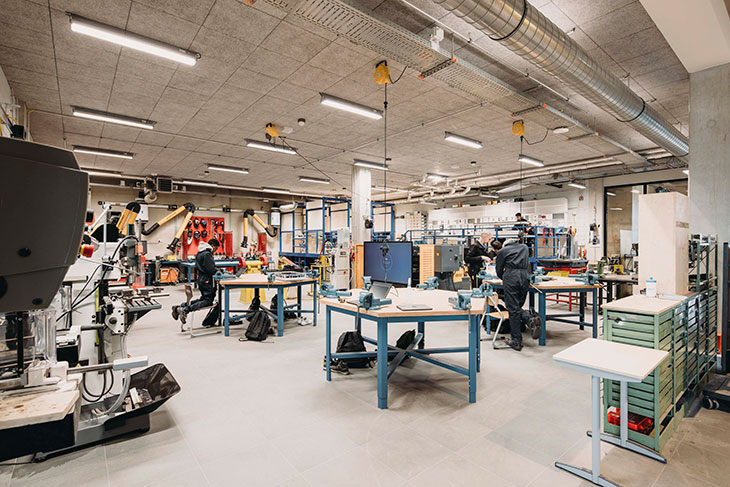
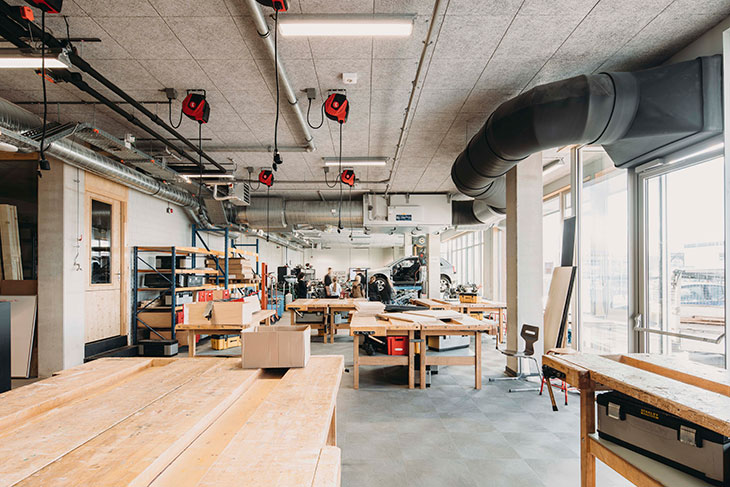
Flexibility lies at the heart of the building’s design philosophy, with a generic column grid serving as the foundation for future adaptations. The facade, adorned with brick mosaics representing different trades, pays homage to the school’s vocational focus. Internally, the use of timber finishes and saw-tooth roofs not only nods to the industrial surroundings but also enhances the building’s eco-friendly credentials. Bart elaborates on the sustainability aspect, highlighting the judicious use of materials and the integration of solar panels into the roof, ensuring energy efficiency and longevity.
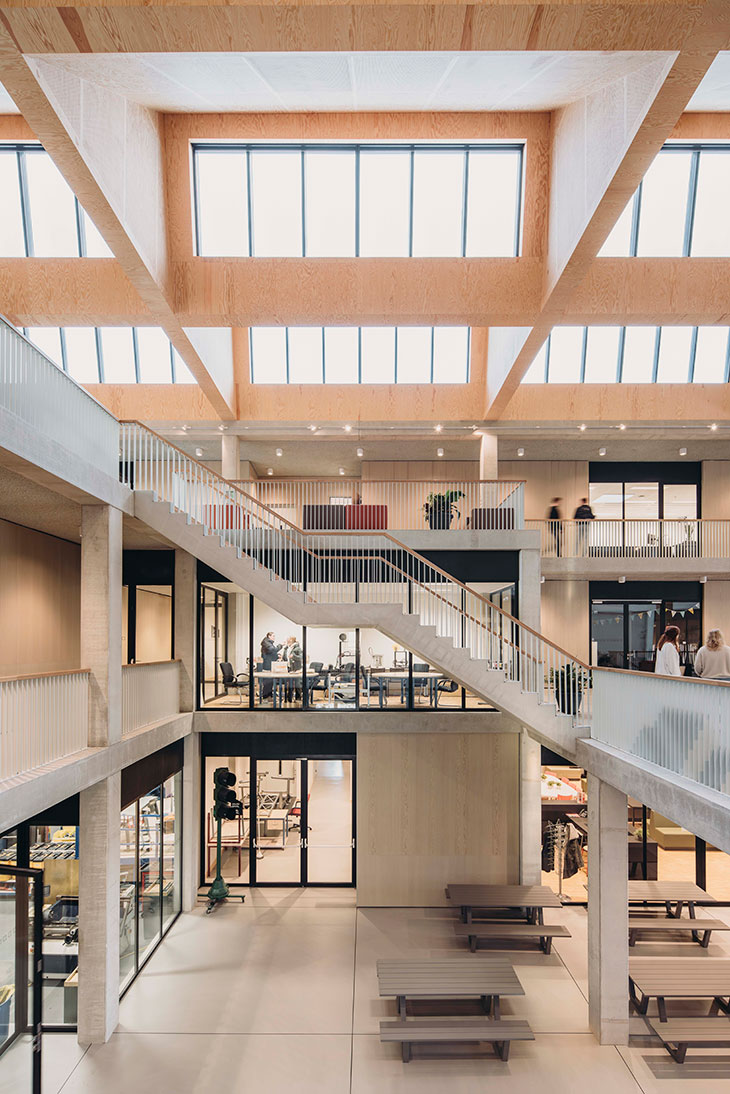
Beyond its immediate functionality, Het Element’s new building, a testament to De Zwarte Hond’s forward-thinking approach, is a testament to forward-thinking sustainability practices. By prioritizing adaptability and longevity, the architects envision a future where buildings evolve alongside the needs of their communities. Bart emphasizes the ethos of preservation, stating the intention never to demolish again. This commitment to sustainability extends beyond education, paving the way for potential future uses in commercial, healthcare, or residential capacities. In essence, Het Element’s new school building not only symbolizes a commitment to education but also sets a benchmark for sustainable, community-centric architecture under the stewardship of De Zwarte Hond.



